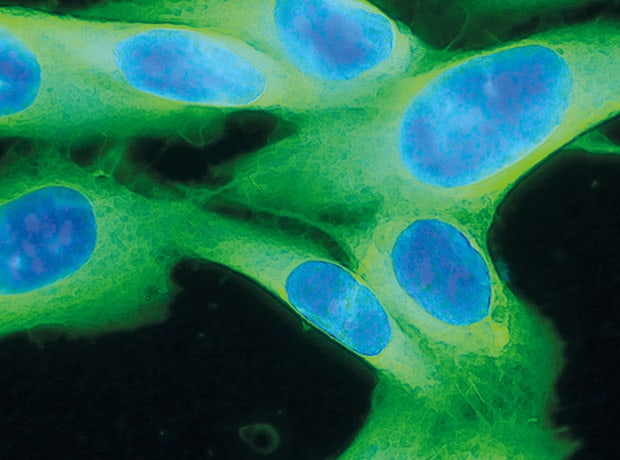Biomedical engineering or bioengineering is witnessing some groundbreaking innovations. Advancements in the multidisciplinary field like tissue engineering reflect on the availability of advanced technologies, strategies, and methods of tissue repair and organ replacement. A branch of regenerative medicine, tissue engineering aims at repairing tissues with the help of tissue scaffold, biomaterials, and cells. Tissues damaged by degeneration, trauma, disease, or accident necessitate treatments that can replace or repair them or the entire organ. The current ultramodern laboratories, scientific research, and developments in nanotechnology can revolutionise medical sciences and the way disease treatment is looked at in near future.
What is tissue engineering?
Tissue engineering combines life science, chemistry, and engineering principles to replace an in vivo mammalian tissue with a neotissue or a newly formed tissue. With the help of this technology, human stem cells can virtually be converted into different types of cells through the process of differentiation. This process can be done on-demand, which is a boon for medical science and healthcare industry. Bioreactors and biomaterials play a vital role in this process. Bioreactors are the in vitro culture systems designed to modify the functions, mechanical properties, organisation, and tissue structure. They ensure the survival of cells by delivering the required nutrients in adequate quantity in a controlled environment. Biomaterials, on the other hand, are the non-viable materials made of synthetic or natural substance and are used to replace or repair an injured or missing tissue.
Current state of tissue engineering

High prevalence of cardiovascular diseases and mortality and morbidity, especially across the emerging economies, is creating a steady rise in demand for organ transplantation. It can offer immediate relief from diseases as it replaces the damaged tissue with the one functioning normally. However, risk of graft rejection and severe scarcity or shortage of organ donors remain the major obstacles that restrict full-fledged adoption of this method. Due to these challenges, tissue engineering is projected as the safer alternative for organ transplant. It uses three basic components:
- Source cells with appropriate phenotype
- Bioreactive signals to induce cell functioning
- Scaffolds to substitute damaged tissue
The most common approach is the use of biodegradable scaffolds potentially derived from stem cells or biopsies. These scaffolds are seeded with cells, which then proliferate, arrange, and produce matrixes, both cellular and extracellular. Skin, heart, cardiac muscles, bones, skeletal muscles, and cartilages are the candidates for tissue engineering. Replacement of skin tissues has been attributed to increased success rate of skin grafting surgeries for the patients sustaining wounds and burns. Therapeutic opportunities of the technology are also broadening due to the successful replacement of urethras and urinary bladders. For example, implantation of bioartificial forelimb in a laboratory rat by a team of researchers at Massachusetts General Hospital (MGH) in 2015.
At present, tissue engineering plays a relatively miniscule role in medical treatment practices. Since the technology is still in nascent stage, the available treatment options and procedures are very expensive and experimental. Despite individual successes, the process of tissue replacement and regenerative medicine has not yet made its mark for regular clinical applications. However, the use of functioning tissues from healthy humans can speed up the pace of developments in regenerative medicine and tissue engineering. Research and development efforts put in by academic institutes and biotech conglomerates will bode well for personalised medicine in near future.
Future trends
The global tissue engineering market is expected to reach USD 11.5 billion by 2022, according to a new report by Grand View Research. By utilising the ability of human body to heal itself, scientists are aiming at better functionality and rapid healing with the help of the patients’ own cellular process. Investments in research and development are anticipated to reap benefits for the emerging field of tissue engineering in the years to come. The technology promises major advancements for near future in terms of wound treatment reduced scarring, and normal life despite disastrous injury. Applications of regenerative medicine in blood vessel rebuilding can provide better heart health and functioning to the patients of various cardiovascular diseases. The possibility of growing an entire organ in the laboratory can provide major relief to the people suffering from heart and kidney failure. Bone and cartilage injuries related to athletic activities can revolutionise sports medicine.

Rising focus on therapeutic applications and increased government funding can create positive atmosphere for tissue engineering over the next few years to come. The scope of therapeutic applications of the technology is anticipated to offer huge relief to the patients of cancer, heart diseases, lung failures, and oral disorders. The technology is also expected to make major breakthroughs in dental, corneal, neurological, orthopedic, integumentary, and other fields over the next few years. Major players like Acelity, Organogenesis, Medtronic, Tissue Regenix; and Zimmer Biomet among others are focusing on bridging the gap between demand and supply of organs. Focus on 3D printing across the developing regions like Europe can assist in reducing the percentage of error and curb the cost to a significant extent.
Aishwarya Vijay is a content writer and editor






